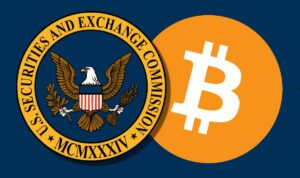Stablecoins in crypto are pivotal instruments, bridging the gap between digital assets and traditional fiat currencies. However, legislative developments in the United States threaten to stifle innovation in the sector just as a path forward was emerging.
The Stablecoin Transparency and Accountability for a Better Ledger Economy Act of 2025 (the STABLE Act), which is currently proceeding through Congress, provides much legal clarity for the stablecoin sector. It also bans yield.
Section 4, part 8 of the Bill is unambiguous on the matter, stating “PROHIBITION ON YIELD.—A permitted payment stablecoin issuer may not pay interest or yield to holders of its payment stablecoins.”
This move has sparked a heated debate among industry leaders, policymakers, and consumers about the future viability and attractiveness of stablecoins.
Stablecoins and Yield – The Crux of the Issue
Stablecoins, such as USD Coin (USDC) and Tether (USDT), are digital currencies pegged to the U.S. dollar and backed by cash or other reserve assets like short-term U.S. Treasuries. These reserves generate yield, but currently, the interest earned is typically retained by the issuers rather than passed on to the consumers. The proposed U.S. legislation aims to formalize this practice by explicitly prohibiting stablecoin issuers from paying interest to token holders.
Brian Armstrong, CEO of Coinbase, has been vocal in his opposition to this legislative direction. In a recent post on his X account, Armstrong argued that U.S. stablecoin legislation should allow consumers to earn interest on their holdings.
He emphasized that the government shouldn’t favor one industry over another and that both banks and crypto companies should be permitted and encouraged to share interest with consumers, aligning with a free-market approach.
Recent moves by the OCC and the SEC have thrown the door open for US banks to offer wide-ranging crypto services. They will be able to act as crypto-asset custodians; maintain stablecoin reserves; issue cryptocurrencies and other digital assets; act as market makers and exchange agents; participate in blockchain-based settlement or payment systems, perform node functions and related activities such as finder activities and lending.
For US crypto platforms like Coinbase, Kraken and Crypto.com, expanding beyond being simple exchanges is key to their growth as financial services suppliers – and their ability to compete with banks for customers. Integral to that is the ability to attract deposits, but if customers can’t earn a yield on the stablecoins they deposit with Coinbase, why would they deposit at all? Clearly, legacy banks will have a huge advantage if the STABLE Act passes in its current form.
Potential Implications for Consumers and the Economy
The prohibition of interest payments on stablecoins could have several far-reaching consequences:
Diminished Consumer Benefits: Currently, the average consumer savings account in the US yields a meager 0.41%, often as low as 0.01%. In contrast, the average Federal Funds rate in 2024 was 4.75%. Allowing stablecoins to pay interest could democratize access to higher yields, enabling consumers to preserve and grow their wealth more effectively.
US Economic Growth: Stablecoins are already significant holders of U.S. Treasuries, with holdings surpassing those of many countries. By allowing interest payments to consumers, more capital could flow into the U.S. economy, reinforcing the dollar’s dominance and stimulating economic growth. Additionally, offshore crypto finance platforms like Nexo and YouHodler do offer yield on stablecoin deposits – a maximum of 16% for USDT on Nexo, for example. With no borders restraining stablecoin movement, it’s likely these companies – not US ones – will see an influx of US clients seeking stablecoin yield.
Divergent Perspectives
The debate over interest-bearing stablecoins has elicited a spectrum of opinions:
Supporters: Advocates like Armstrong contend that enabling interest payments aligns with free-market principles and offers tangible benefits to consumers. They argue that such a move would level the playing field between traditional banks and crypto companies, fostering healthy competition and innovation.
Opponents: Critics, including regulatory experts and the American Bankers Association, warn that permitting stablecoins to pay interest could incentivize consumers to shift funds from FDIC insured bank deposits to uninsured crypto accounts. They say this migration could potentially destabilize traditional financial institutions and heighten systemic risks.
The Legislative Landscape
Fortunately, the game isn’t over yet. The STABLE Act is now moving to the U.S. House floor, where further amendments can be proposed. No doubt crypto lobbyists on Capital Hill will be very busy in weeks to come trying to get changes to Section 4, part 8.
After debate and potential amendments, the House will vote on the bill. If it passes by a simple majority (218 out of 435), the bill moves to the Senate, where a similar process occurs. From here the bill could either go to the President for signing or back to the House for further work.
Presidential approval might also be complicated by the Trump family’s World Liberty Financial and its announcement on March 25th that it too would be launching a US dollar stablecoin, USD1, backed by “short-term US government treasuries, US dollar deposits, and other cash equivalents.”
Conclusion
The discourse surrounding interest payments on stablecoins underscores a pivotal moment in the evolution of digital currencies. Striking a balance between fostering innovation and ensuring financial stability is imperative. No yield on stablecoins will be a major blow for crypto sector platforms like Coinbase and others, while at the same time, their lack of deposit insurance means legacy banks will always be a safer option.
The STABLE Act is well-intentioned and necessary – but a workable solution to the yield issue must be found if the US wishes to avoid stifling innovation and cede a competitive edge to foreign platforms – ultimately disadvantaging U.S. consumers and the broader economy.







